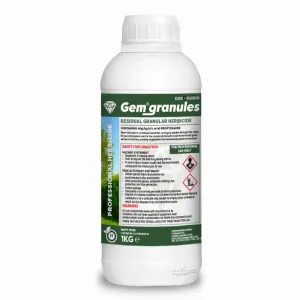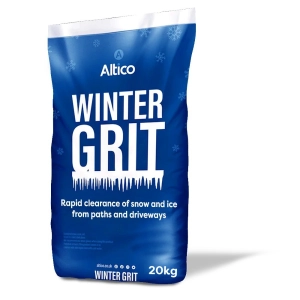1. Plan a new winter planting scheme
Frost, ice and snow do wonderful things to our gardens, landscapes and outdoor spaces. A light dusting of snow can transform the tiniest of gardens, while hoar frost can create picturesque backdrops worthy of Narnia.
Take a moment to soak up the visual change and think about planting schemes that really stand out in winter (varieties of dogwood, cherry, crab apple, heather, and mahonia – among many others – can look glorious in the colder months).
You can plant shrubs in December too, so do stock up on tools and fertilisers to help your winter wonderland become a reality.
2. Create new pathways
Lawn lovers will be eagerly waiting the arrival of spring when our lawns will once again demand our attention. But while your grass is dormant, why not create a few safe pathways through your lawn using grass-safe de-icer?
Apply this non-corrosive, low environmental impact de-icer with a watering can or sprayer and take a safer winter wander around your lawn. Or, if you’re feeling creative, try your hand at an artistic display or pathway maze!
Any unused de-icer can be used on your driveways and hard surfaces to keep the whole family safe from slips.
3. Make a Christmas wreath
Wreaths no longer need to contain the traditional holly and ivy. It’s 2024, and anything goes! Any flexible evergreen foliage will work, so grab your secateurs, don your gardening gloves and get out into the garden!
If you do have holly and ivy, grab a few pieces of those, but you could also try eucalyptus, rosemary, gypsophila, pampas grass, any conifer, dried flower or seed heads, or even moss – let your imagination run wild!
You can use the strongest foliage branches to twist everything around a circular shape or buy a purpose-made wreath ring.
Simply fan out your foliage around the ring or form a circle tying each piece down with twine or garden wire until you’ve achieved a full looking wreath.
Finish with a ribbon and a loop of wire or twine at the back for hanging, et voila!
4. Plant a tree
Winter is the right time to plant trees. Roots are dormant so planting in December gives trees enough time to establish so they can get going once the warmer weather arrives. Perhaps consider an evergreen to give your garden more visual impact next year.
As long as the ground is not frozen, you can plant in December. Take a look at our range of specialist tree fertilisers to support your new tree’s growth.
Many fruit crops can be planted out in December too, including apples, blackberries, mulberries, quinces, raspberries, redcurrants, and tayberries.
5. Protect your plants
Don’t forget that your less hardy plants (and pot plants that might be more exposed to low temperatures) need a little protection in winter.
Grab yourself some frost fleece and wrap it around your more vulnerable plants. Use straw around the base of tropicals and tender ornamentals too, and consider mulching your beds and borders.
Take a look at our guide to using frost fleece for more information.
Finally, sprinkle a few Gem Granules around the base of your trees and shrubs to protect them from winter weed invasions.
6. Treat your greenhouse to a spruce up
December is a great time to give your greenhouse a little attention. If you’re using your greenhouse to protect plants over winter, you’ll need to maximise the light, so think about cleaning the glass.
You can use Sapphire Pro on the outside of your greenhouse glass to remove moss and algae growth. This amazingly effective product delivers great long-lasting results and can be used all year round.
7. Make leaf mould
Keep collecting your fallen leaves through December. Use a powerful blower to move leaves from gravel and hard surfaces (as well as your lawn) into an organised pile.
Taking them off hard surfaces will make walking in the garden safer and removing them from grass will give your lawn some much needed light in the darker winter months. It will also help prevent disease and fungus from getting a hold.
You can leave your leaves in bin bags if you cut a few holes in the bags. Alternatively, you can pile them up inside a chicken wire cage or anywhere that air can get to them, and they won’t blow away. Your leaf mould should be ready in 8-12 months.
8. Prune off any damaged tree and shrub branches
Woody plants can be tidied in December. Focus on removing broken, dead or dying twigs and branches, cutting back to a healthy bud. Use powered secateurs to cut through tougher or thicker branches.
Keep any straighter long branches somewhere dry over winter to use as stakes for crop and plant supports next year.
You can prune climbing roses, fruit trees and bush fruits too in December – getting them ready to support new growth come spring. Take a look at our guide to pruning for more information.
We hope we’ve encouraged you to get outside in December and that you enjoy some winter moments in your garden. Spending a little time with your plants now will pay dividends come spring (and that mince pie will taste all the better when you get back indoors!).












